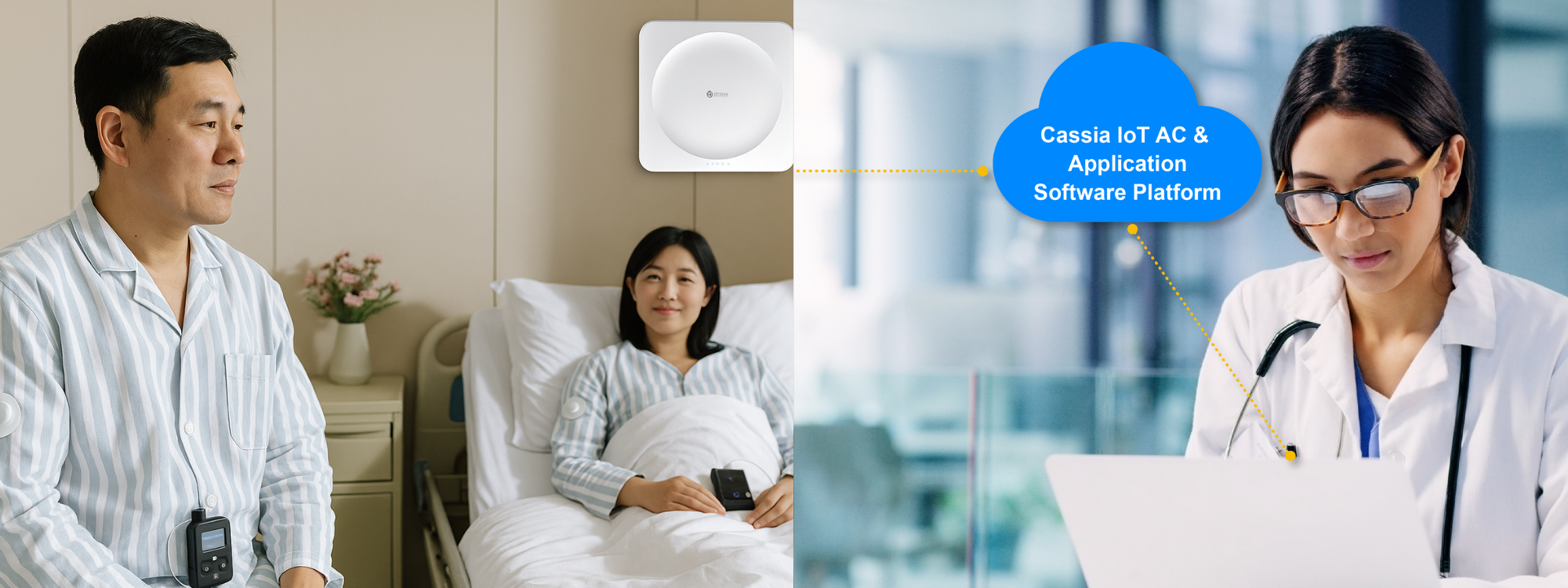Joint Solution Brief

Overview
Qingdao Endocrine and Diabetes Hospital, one of China’s leading institutions for diabetes treatment, launched its Smart Diabetes Management Ward in 2024 to address the persistent challenges in diabetes care—such as fragmented glucose monitoring, delayed insulin dosage adjustments, and low patient adherence. By integrating continuous glucose monitors (CGMs), insulin pumps, and Bluetooth-based IoT technology, the hospital has built a closed-loop solution for real-time, automated diabetes management.
Challenge
Traditional inpatient diabetes care encounters problems such as:
- Disjointed data collection from multiple devices
- Delayed insulin dosing decisions
- Heavy reliance on manual data entry
- Limited patient engagement and mobility
To solve these issues, Qingdao Endocrine and Diabetes Hospital sought a comprehensive system that could:
- Provide real-time glucose data to clinicians
- Automatically regulate insulin infusion
- Enable seamless patient mobility without data loss
- Centralize device management hospital-wide
Solution
Qingdao Endocrine and Diabetes Hospital in partnerships with Cassia Networks deployed an integrated system combining:
- Silicon-based GS3 Continuous Glucose Monitors (CGMs): Tracks glucose every 5 minutes with AI-calibrated accuracy and NFC pairing.
- LenoMed Insulin Pumps: Supports micro-precision insulin infusion with cloud-synced adjustments based on CGM feedback.
- S2000 Bluetooth Gateways and AC IoT Controllers from Cassia Networks. These devices formed the wireless communication backbone, enabling real-time data transmission and control.
Key Technology Components
- S2000 Bluetooth Gateway
- Connects up to 20 CGM sensors and insulin pumps simultaneously
- Maintains stable BLE communication even across walls and between rooms
- AC IoT Controller
- Supports Bluetooth roaming, automatically handing off devices to the nearest gateway for uninterrupted data flow
- Performs edge processing, filtering outliers before sending to the hospital cloud, reducing latency and cloud workload
System Architecture
- Data Flow
- CGM devices transmit readings via BLE to nearby S2000 gateways
- Gateways forward the data to the AC controller, which preprocesses and sends it to the hospital’s central platform
- Insulin pumps receive dynamic dosing instructions based on real-time CGM trends
- Platform Capabilities
- Real-Time Monitoring: Clinicians access glucose trends, infusion logs, and device status remotely
- Automated Alerts: Alarms triggered for hypo/hyperglycemia (glucose <70 mg/dL or >180 mg/dL)
- Predictive Analytics: Historical data analyzed to generate personalized insulin plans
- Interdepartmental Integration
- Enables seamless glucose monitoring for patients referred to other units such as cardiology or surgery
Results
The integrated IoT-based system significantly improved clinical outcomes, operational efficiency, and patient satisfaction.
Clinical Impact
- +40% increase in target-range glucose levels (70–180 mg/dL)
- −35% reduction in hyperglycemic events
- −28% decrease in nighttime hypoglycemia
- Detection and treatment of phenomena like the “dawn effect” became easier through continuous trend data
Operational Gains
- 80% reduction in manual logging and glucose data entry
- Device issues resolved within 15 minutes through centralized AC controller management
- Hundreds of connected devices managed seamlessly across departments
Patient Benefits
- Painless monitoring with a 0.4mm probe, reducing discomfort from finger pricks
- Increased mobility as the system supports real-time data transfer during movement
Innovation Highlights
- Bluetooth Roaming: Patients can move freely across rooms or floors without interrupting data transmission
- Scalable Architecture: One AC controller manages hundreds of gateways, future-proofing hospital-wide IoT deployment
- Open API Ecosystem: The platform can integrate third-party medical devices like ECGs and blood pressure monitors
Conclusion
Qingdao Endocrine and Diabetes Hospital’s initiative demonstrates the power of a closed-loop, IoT-driven approach to chronic disease management. By integrating CGMs, insulin pumps, and Cassia-compatible Bluetooth infrastructure, the hospital achieved precision treatment, reduced labor costs, and improved patient quality of life. This model sets a new benchmark for smart hospital wards and provides a scalable blueprint for institutions aiming to modernize diabetes care through digital transformation.
Please contact Cassia Networks team at sales@cassianetworks.com to discuss your hospital needs for continuous vital sign monitoring.

